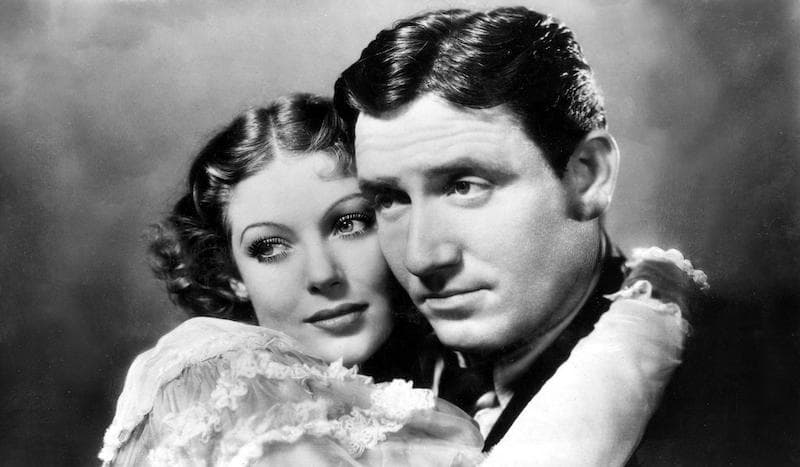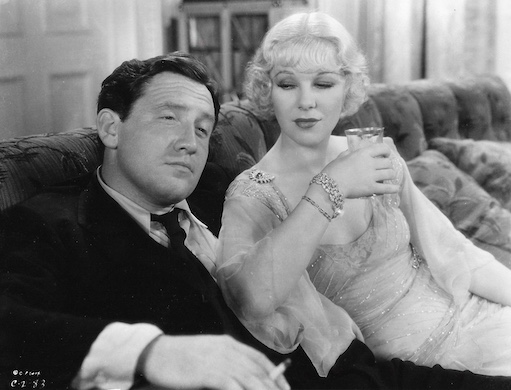Frank Borzage Is a Name Cineastes May Want To Know, and MoMA Is the Place To See His Films
One of the pictures, ‘Man’s Castle’ (1933), had only been available in a version that was tinkered with by the higher-ups. What audiences will be seeing is close to what audiences saw in theaters almost a century ago.

‘Frank Borzage and Man’s Castle’
Museum of Modern Art
April 18-24
Thirty years after the publication of a biography by Hervé Dumont, “Frank Borzage: The Life and Films of a Hollywood Romantic,” any mention of its title subject is likely to be met with blank stares. Martin Scorcese in his introduction rues the ahistorical bent of popular culture by citing how even the name of a revered figure like John Ford could prompt head-scratching these days. “Where,” he asked, “does that leave Frank Borzage?”
The glib answer, for the next week or so, is the Museum of Modern Art. A curator in the Department of Film, Dave Kehr, has organized “Frank Borzage and Man’s Castle,” a program of five films centered on the title picture. The others are “Bad Girl” (1931), “No Greater Glory” (1934), “Moonrise” (1948), and what is likeliest Borzage’s best film, “History Is Made at Night” (1937). Each of these pictures has undergone restoration, with “Man’s Castle” having undergone significantly more than that.
What audiences will be seeing at MoMA is close to what audiences saw in theaters almost a century ago. Up until now, “Man’s Castle” (1933) was only available in a version that was tinkered with by the higher-ups. When Columbia Pictures re-released the film in 1938 to cash in on the newfound popularity of Spencer Tracy, Borzage’s picture was deemed illicit, having been filmed prior to the establishment of the Hays Code. Many scenes were upended, and almost 10 minutes cut. That oh-so-swift shot of Loretta Young skinny-dipping in the Hudson River? Audiences back in the day shouldn’t be expected to put up with such a thing.
All right, so maybe it’s a studio backlot and not the actual Hudson River. And that slinky actress in the water? She could well have been a body double. Certainly, Tracy wasn’t in the buff during the same scene: he’s wearing some-or-other contrivance masking his presumably bare backside.
All of which was the least of Columbia’s concerns when rejiggering “Man’s Castle.” Saucy tête-à-têtes, cohabitation outside of marriage, prostitution put forth as a viable means of livelihood, and intimations of abortion-on-demand — yeah, they weren’t gonna happen. Columbia’s re-cut was, I am told, haphazard if not completely nonsensical. Sony Entertainment’s asset manager, Rita Belda, will be on hand for the April 20 showing of “Man’s Castle” to discuss the film’s convoluted history and her role in patching it back together.

How well the picture fared at the box office upon its re-release is a good question. How well it will fare with contemporary audiences is quite another. Notwithstanding the aforementioned inventory of tangents, “Man’s Castle” iterates ideas about the roles of men and women that some will consider retardataire and, perhaps, dangerous. The romanticization of homelessness may also stick in the craw for those not inclined to cut the Hollywood dream machine the slack it often requires.
Granted, the picturesque shantytown seen on banks of the Hudson points to the topical relevance of this Depression-era entertainment, but it’s fair to say that few people have encountered a bindlestiff quite as natty as Bill (Tracy). We initially see him in top-of-the-line finery seated on a park bench near the Plaza, or at least something approximating the Plaza. Bill cracks wise as he feeds popcorn to pigeons. Eventually he sees that a young woman has alighted on the bench. She eyes the popcorn with notable envy. Trina (Young) hasn’t eaten for days.
Bill is a tough-talking wise-acre with a soft heart and barely a sawbuck to his name. Trina is — well, she’s angelic. Borzage and cinematographer Joseph H. August reaffirm as much by lighting Young with the most caressing of halos. The story, adapted by Jo Swerling from a play by Lawrence Hazard, details Bill and Tina’s burgeoning romance and fills it out with a colorful supporting cast. Prominent among them is Glenda Farrell as the improbably named Faye La Rue, a nightclub singer who is equal parts Betty Boop and Mae West. Her seduction of Bill is a sidestory that met the cutting room floor.
“Man’s Castle” is an odd creature, being a not altogether convincing mish-mash of screwball comedy, marital melodrama, and social realist exposé. Borzage didn’t escape the stagey trappings of the source material and the dialogue is, on the whole, too stilted to crackle. Tracy doesn’t yet have his sea legs as an actor, and comes off as doughy and unformed. Young, though, is luminous and not just because of the filmmaker’s ministrations. She sells Trina’s dogged optimism and locates the heart and soul of her pre-feminist longings.
With all due respect to MoMA and Ms. Belda’s scholarly investigations, I dare say viewers will exit the theater less interested in Borzage and more taken with the doe-eyed woman in this “Man’s Castle.”

